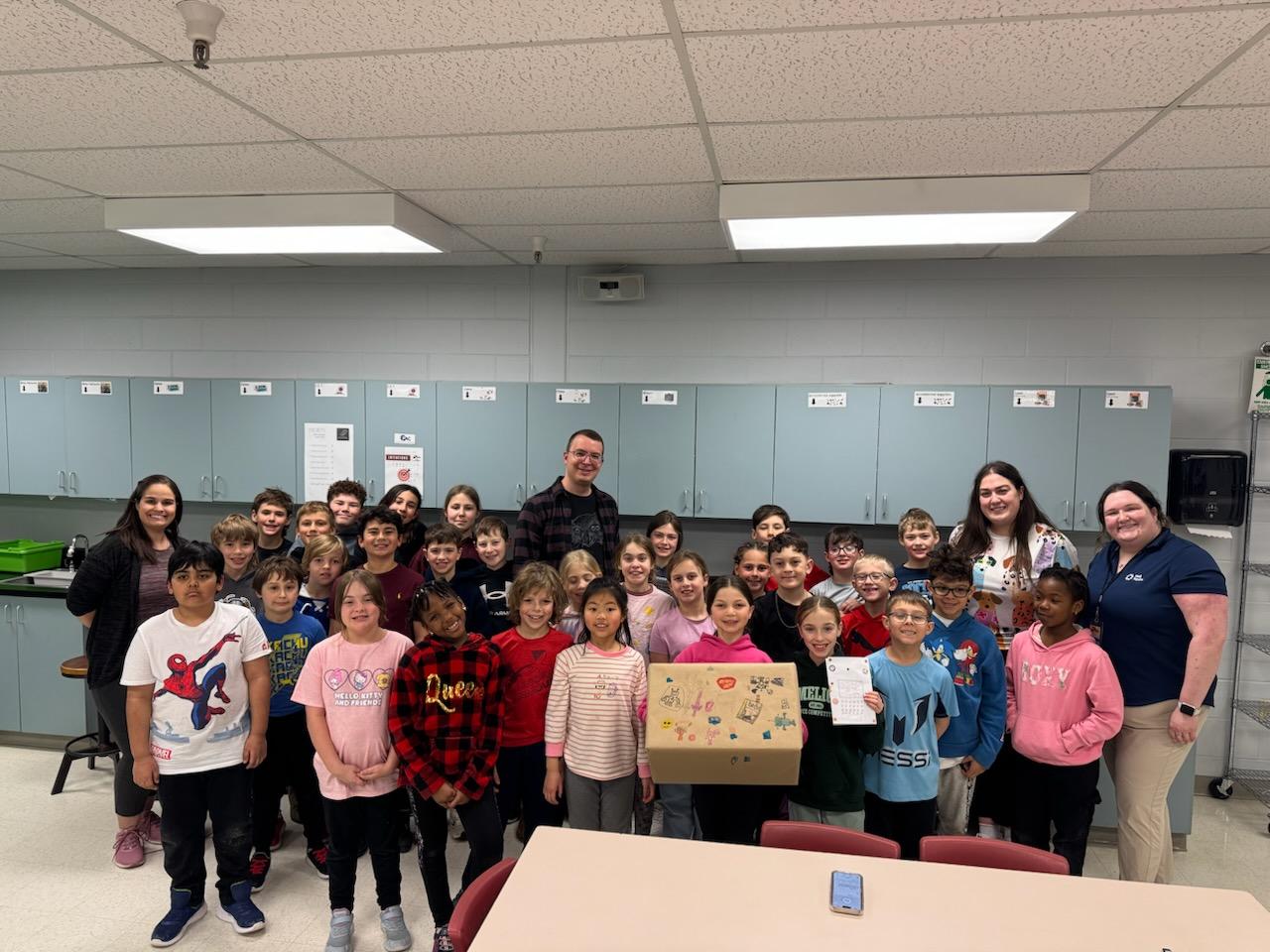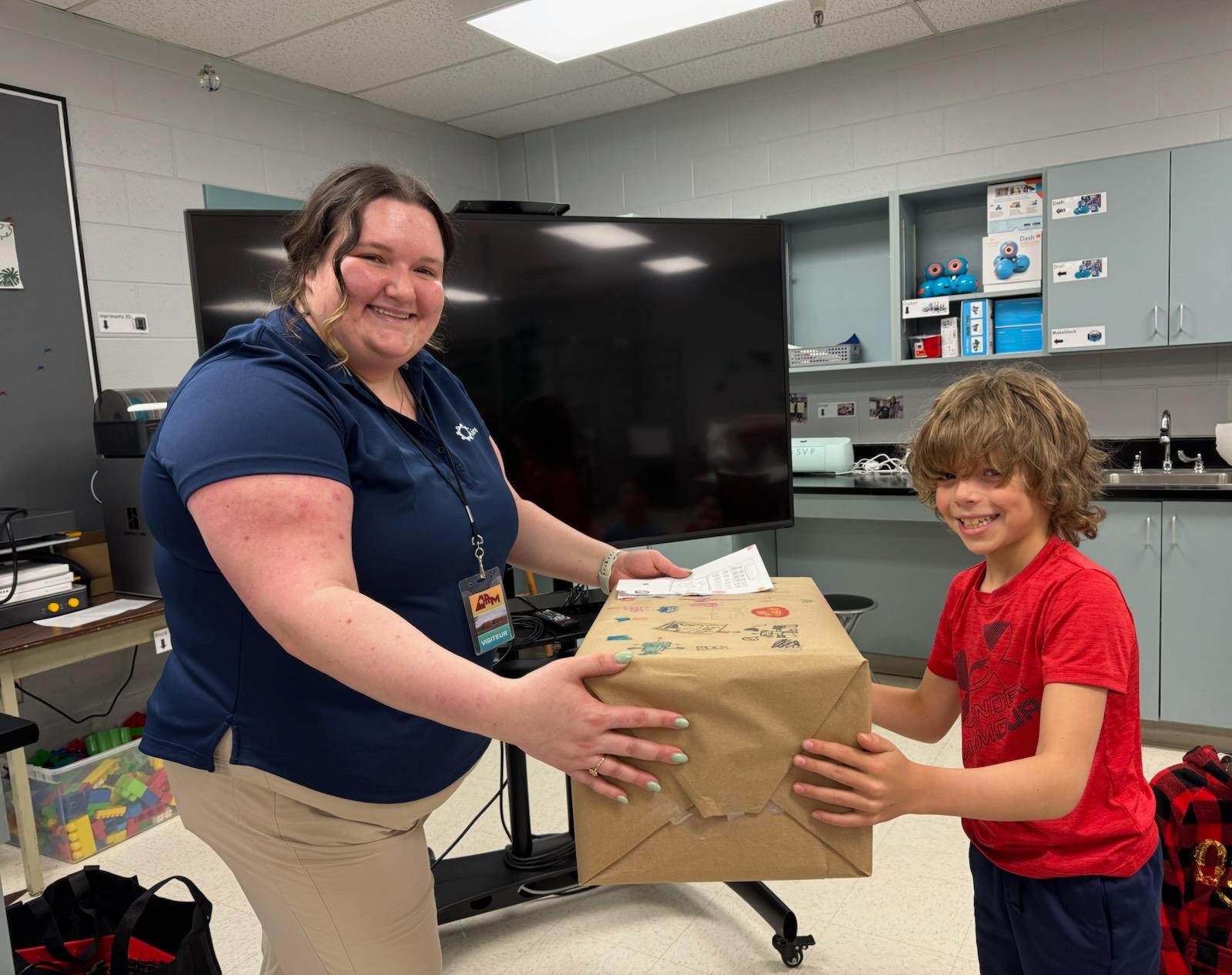English Version — la version française suit

A successful collaboration between Place aux compétences (new window), École Anna-Malenfant (new window), and our Makers Making Change (new window) and Solutions (new window) programs resulted in the creation of a simple yet effective 3D-printed adaptation for a Neil Squire client preparing to return to work with pain and limited left arm mobility.
When Atlantic Region Solutions Occupational Therapist, Lianne Boudreau, needed a custom solution for an angled wrist support, she reached out to our Makers Making Change program. Makers Making Change worked with our community partners, Place aux compétences, and through their student entrepreneur program coordinated by Mario Levesque, they were eager to help.

The barrier was presented to a fifth-grade class at École Anna-Malenfant in Dieppe, New Brunswick, who were excited to take on the challenge of designing and 3D printing the adaptive piece needed. To add an extra touch of creativity and care, a third-grade class at École Anna-Malenfant wrapped and decorated the finished pieces to ensure the most heartwarming unwrapping experience possible.
With her new 3D-printed support, as well as a handheld assistive device with programmable buttons and an adjustable forearm support, the client can now begin gradually returning to work with the appropriate accommodations.

This collaboration demonstrates how innovation, education, and community partnership can come together to promote accessibility, inclusion, and independence in the workplace.
Neil Squire Solutions, Fabricants pour le changement, Place aux compétences et l’École Anna-Malenfant collaborent pour développer une technologie d’assistance personnalisée pour un client
Version française — the English version precedes

Une collaboration efficace entre Place aux compétences (nouvelle fenetre), l’École Anna-Malenfant (nouvelle fenetre) et nos programmes Fabricants pour le changement (nouvelle fenetre) et Solutions (nouvelle fenetre) a permis la création d’une adaptation imprimée en 3D, simple mais efficace, pour un client de Neil Squire qui se préparait à retourner au travail malgré la douleur et une mobilité réduite du bras gauche.
Lorsque Lianne Boudreau, ergothérapeute chez Solutions pour la région de l’Atlantique, a eu besoin d’une solution sur mesure pour un support de poignet incliné, elle a fait appel à notre programme Fabricants pour le changement. Fabricants pour le changement a collaboré avec nos partenaires communautaires, Place aux compétences et par un programme d’entrepreneuriat étudiant coordonné par Mario Lévesque, s’est montré très enthousiaste à l’idée d’apporter son aide.

La barrière a été présentée à une classe de 5ième année de l’école Anna-Malenfant de Dieppe, au Nouveau-Brunswick. Les élèves étaient ravis de relever le défi de développer et d’imprimer en 3D la pièce adaptée nécessaire. Pour ajouter une touche de créativité et d’attention, une classe de 3ième année de la même école a emballé et décoré les pièces finies, afin de rendre le déballage des plus excitant.
Grâce à sa nouvelle support imprimé en 3D, ainsi qu’à un appareil portable avec des boutons programmables et d’un support d’avant-bras ajustable, la cliente peut maintenant reprendre progressivement ses activités professionnelles avec les adaptations nécessaires.

Cette collaboration démontre comment l’innovation, l’éducation et le partenariat communautaire peuvent s’unir pour soutenir l’accessibilité, l’inclusion et l’autonomie au travail.
